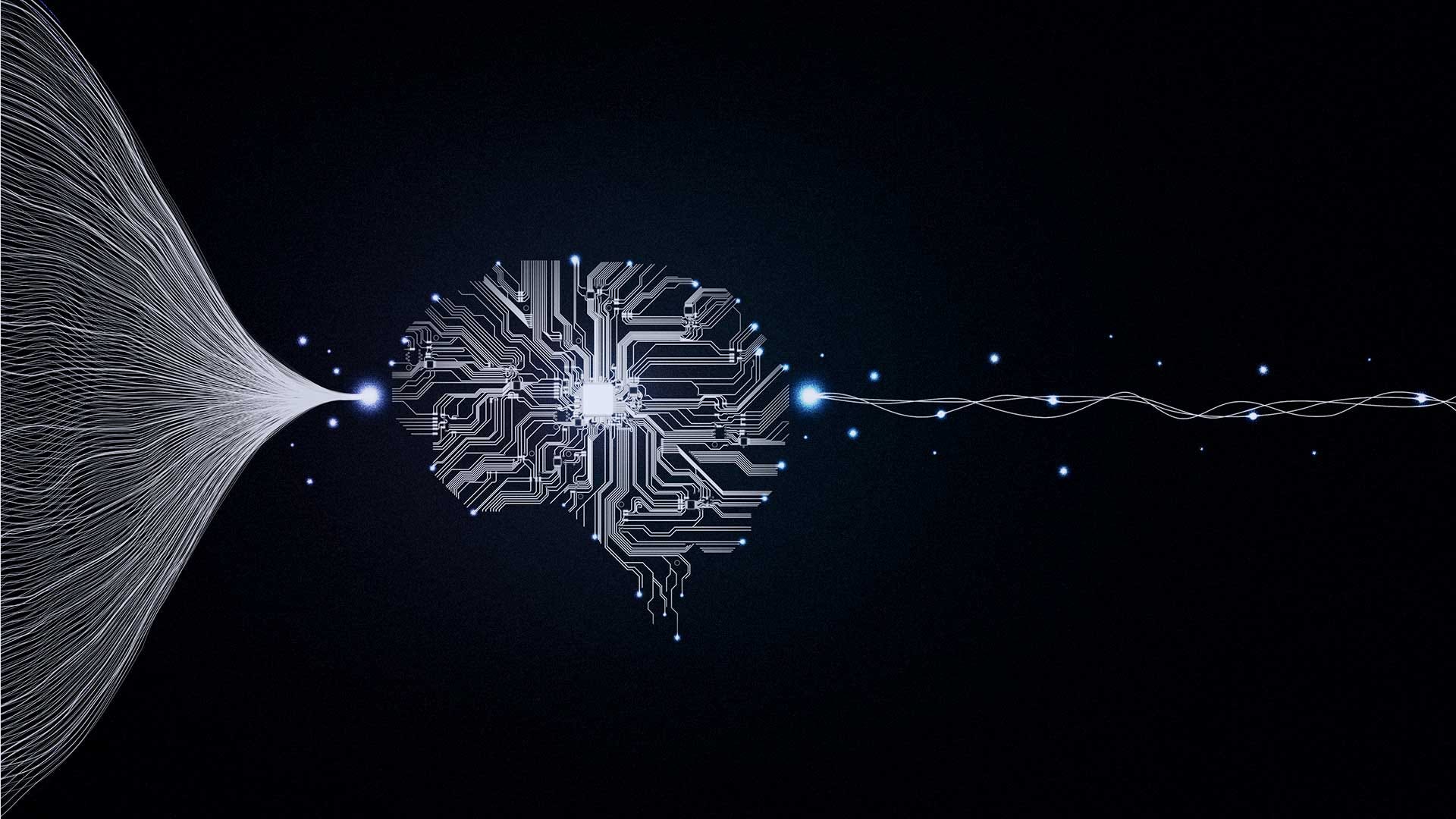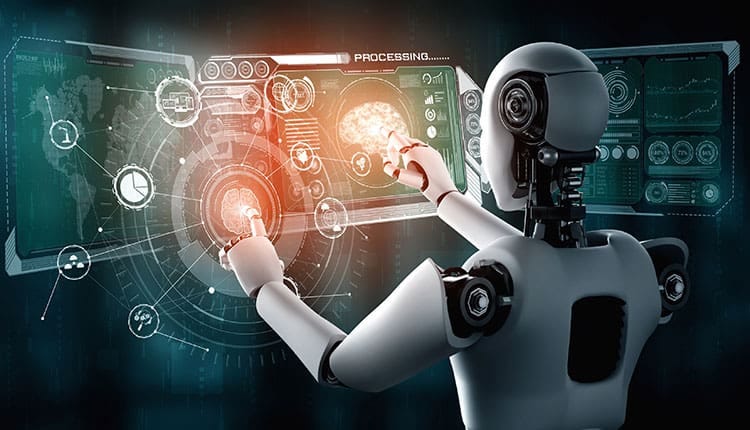Machine learning (ML) has become a cornerstone of technological advancement in recent years. Its applications span industries, from healthcare and finance to entertainment and autonomous systems. This article will provide an in-depth understanding of the basics of machine learning, its various types, key concepts, and how it is applied in different domains.
What is Machine Learning?
Machine learning is a subset of artificial intelligence (AI) that focuses on the development of algorithms that enable computers to learn from and make decisions based on data. Unlike traditional programming, where explicit instructions are given to a computer, machine learning allows systems to improve their performance over time by identifying patterns in data.
At its core, machine learning involves training a model on a dataset, which is then used to make predictions or decisions without being explicitly programmed to perform the task. The more data the model is exposed to, the better it becomes at making accurate predictions.
Key Concepts in Machine Learning
Before diving into the types of machine learning and its applications, it’s important to understand some key concepts that are fundamental to this field.
- Dataset: A dataset is a collection of data points used to train a machine-learning model. It typically consists of input variables (features) and output variables (labels or targets).
- Features: Features are the individual measurable properties or characteristics of the data that are used as input to the machine learning model. In an image recognition system, for example, features could include pixel values, edges, or colours.
- Model: A model is a mathematical representation of a real-world process. In machine learning, a model is trained on a dataset to learn the underlying patterns and relationships in the data.
- Training: Training is the process of feeding data into a machine learning algorithm and allowing it to learn from the data. During training, the model adjusts its parameters to minimize the difference between its predictions and the actual outcomes.
- Testing: Testing involves evaluating the performance of a machine learning model on a separate dataset that it has not seen before. This helps to assess how well the model generalizes to new data.
- Overfitting: Overfitting occurs when a model learns the training data too well, including noise and outliers, leading to poor performance on new, unseen data. It’s akin to memorizing the answers to a test rather than understanding the material.
- Underfitting: Underfitting happens when a model is too simple to capture the underlying patterns in the data, resulting in poor performance on both the training and test datasets.
- Supervised Learning: In supervised learning, the model is trained on labelled data, meaning that each training example is paired with an output label. The goal is to learn a mapping from inputs to outputs.
- Unsupervised Learning: Unsupervised learning involves training a model on data without labelled responses. The goal is to find hidden patterns or intrinsic structures in the data.
- Reinforcement Learning: Reinforcement learning is a type of machine learning where an agent interacts with an environment to learn a policy that maximizes cumulative reward over time.

Types of Machine Learning
Machine learning can be broadly classified into three categories: supervised learning, unsupervised learning, and reinforcement learning. Each of these types has its own set of techniques and applications.
Supervised Learning
Supervised learning is the most commonly used type of machine learning. In this approach, the model is trained on a labelled dataset, which means that for every input, there is a corresponding output. The goal of supervised learning is to learn a mapping from inputs to outputs so that the model can make accurate predictions on new, unseen data.
Examples of Supervised Learning Algorithms:
- Linear Regression: Used for predicting continuous values, such as house prices or temperatures, based on input features.
- Logistic Regression: Used for binary classification tasks, such as determining whether an email is spam or not.
- Decision Trees: Used for both classification and regression tasks. They split the data into subsets based on feature values, creating a tree-like model of decisions.
- Random Forest: An ensemble method that uses multiple decision trees to improve accuracy and reduce overfitting.
- Support Vector Machines (SVMs): Used for classification tasks, SVMs find the hyperplane that best separates the data into different classes.
- Neural Networks: Inspired by the human brain, neural networks consist of layers of interconnected nodes (neurons) that process data and learn complex patterns.
Applications of Supervised Learning:
- Spam Detection: Email providers use supervised learning algorithms to classify emails as spam or not spam based on features like sender address, subject line, and content.
- Credit Scoring: Financial institutions use supervised learning models to predict the likelihood of a borrower defaulting on a loan based on their credit history and other financial data.
- Image Classification: In healthcare, supervised learning is used to classify medical images, such as detecting tumours in X-rays.
- Speech Recognition: Virtual assistants like Siri and Alexa use supervised learning to convert spoken language into text.
The Evolution of Cloud Computing: What’s Next for the Cloud?
Unsupervised Learning
Unsupervised learning is used when the data does not have labelled outputs. The goal is to explore the data and find hidden patterns or structures without any prior knowledge of what the outputs should be.
Examples of Unsupervised Learning Algorithms:
- K-Means Clustering: A technique used to partition the data into K distinct clusters based on feature similarity.
- Hierarchical Clustering: Builds a tree-like structure of clusters, where each cluster is a node, and nodes are connected based on their similarity.
- Principal Component Analysis (PCA): A dimensionality reduction technique that transforms high-dimensional data into a lower-dimensional space while retaining most of the variance.
- Anomaly Detection: Identifies rare or unusual data points that do not fit the general pattern of the data.
- Association Rule Learning: Used to find relationships between variables in large datasets, often applied in market basket analysis.
Applications of Unsupervised Learning:
- Customer Segmentation: Businesses use clustering algorithms to group customers with similar behaviour or characteristics for targeted marketing.
- Anomaly Detection: In cybersecurity, unsupervised learning is used to detect unusual patterns of network traffic that could indicate a security breach.
- Market Basket Analysis: Retailers use association rule learning to find combinations of products that are frequently purchased together.
- Data Compression: Techniques like PCA are used to reduce the dimensionality of data, making it easier to store and process.
Reinforcement Learning
Reinforcement learning is a type of machine learning where an agent learns to make decisions by interacting with an environment. The agent takes actions and receives rewards or penalties based on the outcomes of those actions. The goal is to learn a policy that maximizes the cumulative reward over time.
Key Concepts in Reinforcement Learning:
- Agent: The entity that makes decisions and takes actions in the environment.
- Environment: The external system or context in which the agent operates.
- Action: The set of possible moves the agent can make.
- State: The current situation or context of the environment.
- Reward: The feedback received by the agent after taking an action, which can be positive or negative.
- Policy: The strategy that the agent uses to determine the next action based on the current state.
Examples of Reinforcement Learning Algorithms:
- Q-Learning: A value-based algorithm where the agent learns a Q-value function that estimates the expected utility of taking an action in a given state.
- Deep Q-Networks (DQNs): An extension of Q-learning that uses deep neural networks to approximate the Q-value function.
- Policy Gradient Methods: These methods directly optimize the policy by adjusting the parameters in the direction of the greatest increase in expected reward.
Applications of Reinforcement Learning:
- Autonomous Vehicles: Reinforcement learning is used to train self-driving cars to navigate complex environments and make real-time decisions.
- Robotics: Robots use reinforcement learning to learn tasks such as picking and placing objects, walking, or navigating through obstacles.
- Game Playing: AlphaGo, developed by DeepMind, is a famous example of reinforcement learning applied to board games. It learned to play and master the game of Go by playing millions of matches against itself.
- Personalized Recommendations: Streaming services like Netflix use reinforcement learning to optimize content recommendations based on user behaviour.
Cybersecurity Threats in the Digital Age: How to Stay Safe Online
Applications of Machine Learning Across Industries
Machine learning has revolutionized numerous industries by providing innovative solutions to complex problems. Below are some of the key applications of machine learning across different sectors.
Healthcare
Machine learning has significantly impacted the healthcare industry, enabling early diagnosis, personalized treatment, and improved patient outcomes.
- Medical Imaging: Machine learning models are trained to analyze medical images, such as X-rays, MRIs, and CT scans, to detect diseases like cancer, fractures, and other abnormalities with high accuracy.
- Predictive Analytics: By analyzing patient data, machine learning algorithms can predict the likelihood of disease outbreaks, hospital readmissions, and patient outcomes, allowing for proactive care and resource allocation.
- Drug Discovery: Machine learning accelerates the drug discovery process by analyzing vast amounts of biological data to identify potential drug candidates and predict their efficacy.
- Personalized Medicine: Machine learning models analyze genetic, environmental, and lifestyle factors to recommend personalized treatment plans for patients, leading to more effective and targeted therapies.
Finance
The finance industry has been an early adopter of machine learning, using it for risk management, fraud detection, and algorithmic trading.
- Fraud Detection: Machine learning algorithms analyze transaction data to detect unusual patterns that may indicate fraudulent activity, helping to prevent financial losses.
- Algorithmic Trading: Machine learning models analyze market data and historical trends to make high-frequency trading decisions, optimizing investment strategies and maximizing returns.
- Credit Scoring: Financial institutions use machine learning to assess creditworthiness by analyzing a borrower’s financial history, employment status, and other factors, leading to more accurate credit scores.
- Customer Service: Chatbots powered by machine learning are used in the finance industry to provide customer support, answer queries, and assist with transactions in real-time.
Retail
Machine learning is transforming the retail industry by enhancing customer experiences, optimizing supply chains, and improving inventory management.
- Recommendation Systems: E-commerce platforms use machine learning to analyze customer behaviour and preferences to recommend products that are likely to interest them, increasing sales and customer satisfaction.
- Demand Forecasting: Machine learning models analyze historical sales data, seasonal trends, and external factors to predict future demand, helping retailers manage inventory levels and avoid stockouts or overstocking.
- Pricing Optimization: Retailers use machine learning to optimize pricing strategies by analyzing competitor prices, customer demand, and market conditions, leading to increased profitability.
- Customer Segmentation: By analyzing customer data, machine learning algorithms segment customers into different groups based on behaviour, demographics, and preferences, enabling targeted marketing campaigns.
Manufacturing
Machine learning is driving efficiency and innovation in the manufacturing industry by enabling predictive maintenance, quality control, and automation.
- Predictive Maintenance: Machine learning models analyze sensor data from machinery to predict when equipment is likely to fail, allowing for timely maintenance and reducing downtime.
- Quality Control: Machine learning algorithms are used to inspect products on production lines, detecting defects or anomalies with greater accuracy than human inspectors.
- Supply Chain Optimization: Machine learning helps manufacturers optimize their supply chains by analyzing data from suppliers, production processes, and logistics to improve efficiency and reduce costs.
- Robotics and Automation: Machine learning enables robots to learn tasks, adapt to changes in the environment, and work alongside humans in manufacturing processes.
Transportation
The transportation industry is benefiting from machine learning through advancements in autonomous vehicles, route optimization, and predictive maintenance.
- Autonomous Vehicles: Self-driving cars use machine learning to process data from cameras, lidar, and sensors to navigate roads, recognize obstacles, and make driving decisions in real-time.
- Route Optimization: Machine learning algorithms analyze traffic patterns, weather conditions, and historical data to optimize routes for delivery trucks, reducing fuel consumption and delivery times.
- Predictive Maintenance: Similar to manufacturing, machine learning is used in transportation to predict when vehicles are likely to require maintenance, preventing breakdowns and improving fleet efficiency.
- Traffic Management: Machine learning models analyze traffic data to predict congestion, optimize traffic light timing, and improve overall traffic flow in urban areas.
Entertainment
The entertainment industry leverages machine learning to personalize content, enhance user experiences, and create new forms of media.
- Content Recommendation: Streaming services like Netflix and Spotify use machine learning to recommend movies, TV shows, and music based on user preferences and viewing history.
- Content Creation: Machine learning algorithms are being used to generate music, art, and even scripts for movies, pushing the boundaries of creativity and content production.
- Gaming: Machine learning enhances gaming experiences by creating more intelligent non-player characters (NPCs), optimizing game levels, and personalizing gameplay.
- Social Media: Machine learning is used to curate content on social media platforms, showing users posts and ads that are most relevant to their interests.

Challenges and Ethical Considerations in Machine Learning
While machine learning offers numerous benefits, it also presents challenges and ethical considerations that must be addressed.
Data Privacy
Machine learning models require vast amounts of data to learn and make accurate predictions. However, collecting and processing this data raises concerns about privacy and data security. It’s crucial to ensure that data is collected with informed consent and stored securely to prevent unauthorized access.
Bias and Fairness
Machine learning models can inadvertently perpetuate biases present in the training data. For example, if a model is trained on biased data, it may make unfair decisions, such as discriminating against certain demographic groups. Addressing bias in machine learning requires careful consideration of data sources and the implementation of fairness measures.
Explainability
Many machine learning models, particularly deep learning models, are often referred to as “black boxes” because their decision-making processes are not easily interpretable. This lack of explainability can be problematic in domains where understanding the reasoning behind decisions is critical, such as healthcare and finance.
Security
Machine learning models are vulnerable to adversarial attacks, where malicious actors manipulate input data to deceive the model into making incorrect predictions. Ensuring the robustness and security of machine learning systems is essential to prevent such attacks.
Ethical Use of AI
The ethical use of machine learning and AI involves ensuring that these technologies are used for the benefit of society and do not cause harm. This includes addressing issues such as job displacement due to automation, the potential misuse of AI for surveillance, and the impact on human autonomy.
Navigating the World of Internet of Things (IoT): Opportunities and Challenges
Machine learning is a powerful technology that has the potential to transform industries and improve our daily lives. By understanding the basics of machine learning, its types, key concepts, and applications, individuals and organizations can harness its capabilities to drive innovation and solve complex problems. However, it is also important to be mindful of the challenges and ethical considerations associated with machine learning to ensure that its benefits are realized responsibly and fairly. As the field of machine learning continues to evolve, it will undoubtedly play an increasingly important role in shaping the future of technology and society.





